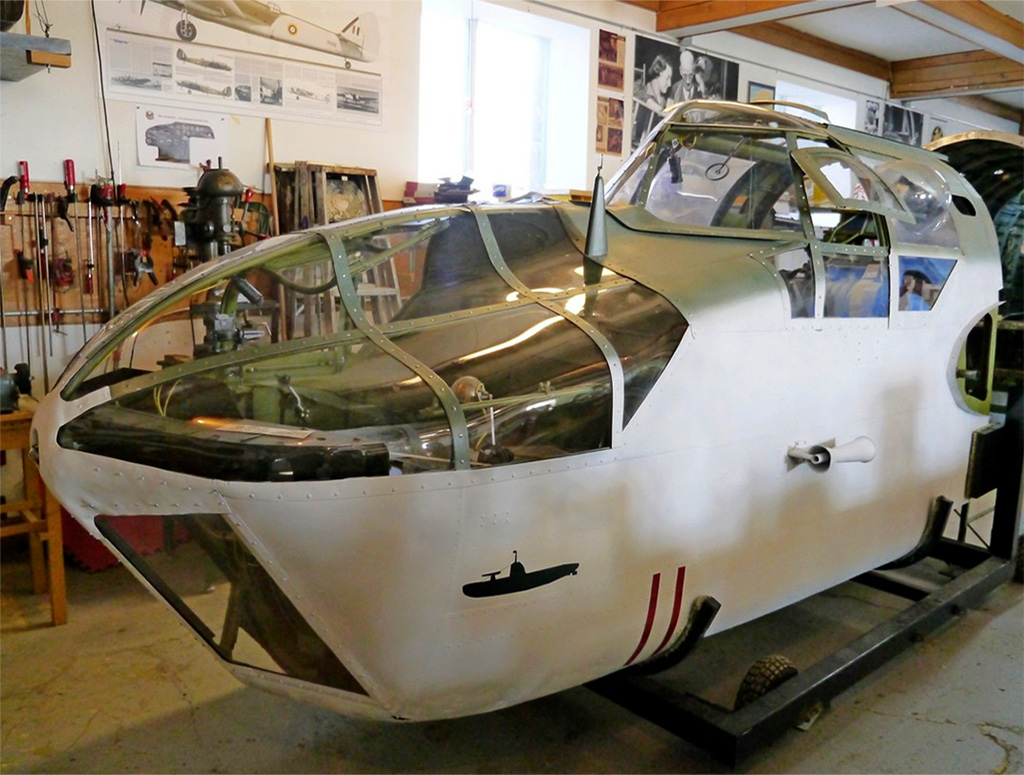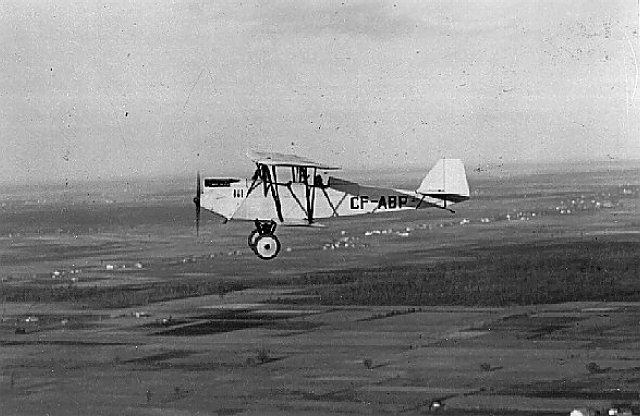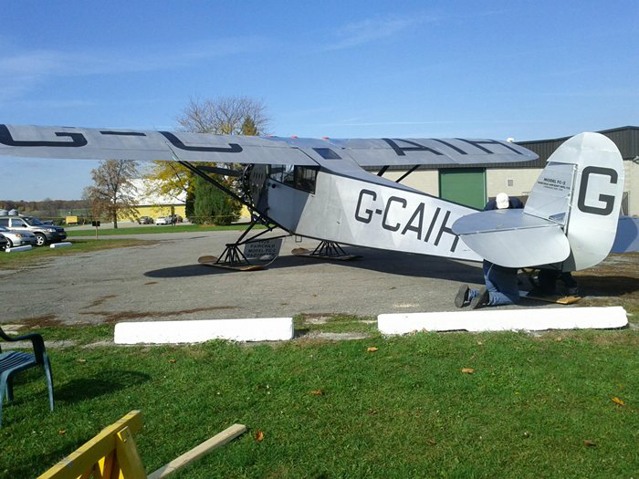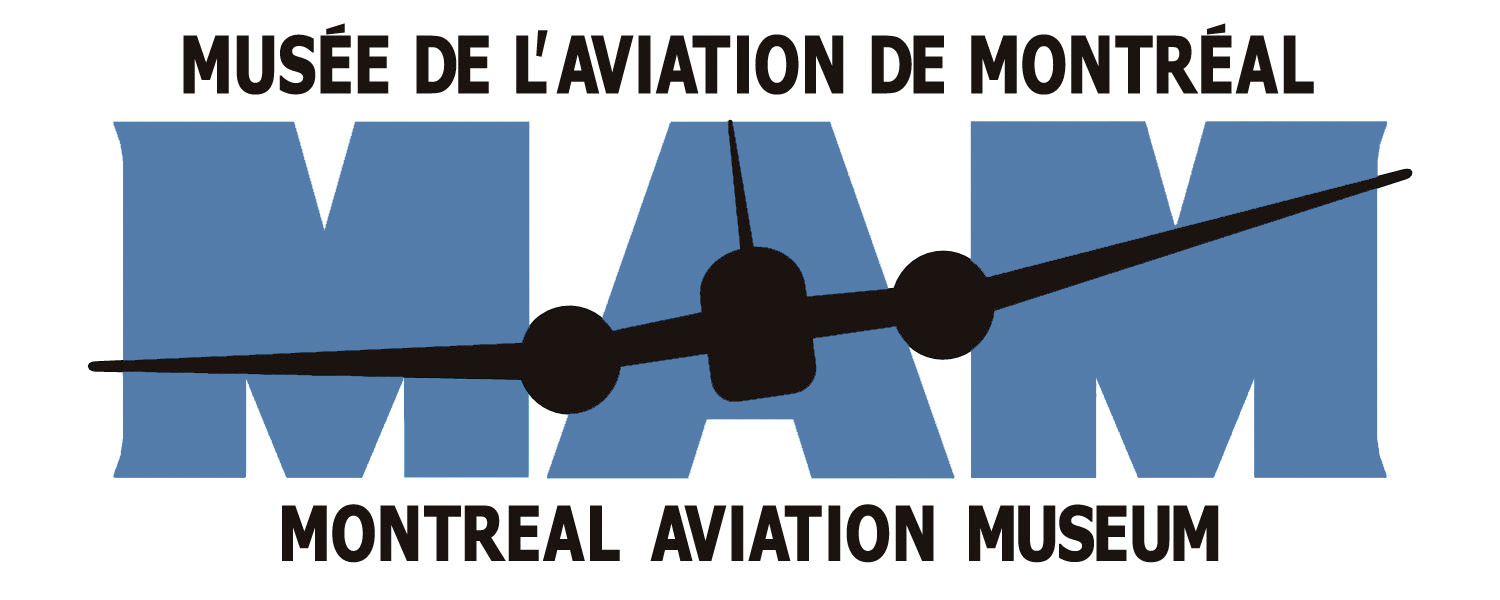Bristol Bolingbroke Mk IV (1942)

The Bolingbroke cockpit is a real attraction and proved itself again at the AéroMontréal exhibition held on February 11th , 2016, where over 2000 people from all ages attracted by the aerospace industry gazed at the Boly with keen interest. Here’s the latest status on the Bolingbroke aircraft restauration project by the Montreal Aviation Museum (MAM) volunteers.
The cockpit is in its final stage of restauration for static display at the center. The crew lighting, the air ducts with stitched leather, the astrocompass, the bomb sight, the Adlis lamp, the navigator head set, the bomb switch, the flare gun, the flight crew original seat belts, maps, the crew equipment canvas pouches with markings and the axe have all have been installed.
Blériot XI Scarabée (1909)

The Blériot XI was designed and built by Louis Blériot of France in 1909. In this aircraft, Blériot became the first man to successfully fly across the English Channel. Another important "first" was the 1910 flight over the City of Montreal by Count Jacques de Lesseps in his Blériot XI christened “Le Scarabée”. This epic flight was the first over a Canadian city. Members of the Montreal Aviation Museum are currently building a full-scale reproduction of the Blériot XI from an original set of plans.
A full scale replica of the Blériot XI christened ''Le Scarabée'', the first aircraft to have flown over the City of Montreal in 1910, successfully achieved its maiden flight on August 29, 2014. Piloted by Robert Erdos, Chief Test Pilot with the National Research Council of Canada, the Blériot XI is a replica aircraft, based on original plans, built entirely by volunteers of the Canadian Aviation Heritage Centre in Ste-Anne-de-Bellevue, Quebec. The first test flight was performed in ideal conditions following a 15 year construction period.
Curtiss-Reid Rambler (1928)

The Curtiss-Reid Aircraft Co Ltd was formed in December 1928 when the New York based Curtiss Aeroplane and Motor Company took a controlling interest in the Reid Aircraft Company of Montreal. The Canadian company had itself only been set up in February of that year by former Canadian Vickers designers William T Reid and MJ Berlyn. Together, they designed a two-seat sesquiplane as a club trainer, private tourer and light transport aircraft. This aircraft first flew at Cartierville (Montreal) on September 23rd 1928 piloted by Martin Berlyn and was named the Reid Rambler at a demonstration ceremony on September 29th.
The Rambler's Fuselage was a rectangular structure of welded steel tube, fabric covered, as was the tailplane which consisted of a one-piece horizontal unit and a balanced rudder with no fixed fin. Tandem open cockpits with full dual control were to be standard. The wings, which folded for storage, consisted of duralumin spars and ribs, fabric covered , with the top wing supported above the fuselage on steel tube struts. The interplane struts, also of steel tube, were circular in section on the prototype but streamlined on production Ramblers, forming a V when viewed from the front. Simplicity was achieved in design by making each side of the undercarriage interchangeable and by making the wing spars of dural tubing which was simply cut to length and slightly flattened at the outer ends.
Fairchild FC-2 Razorback (1927)

The Fairchild FC-2 was a pioneer "bush plane", quite advanced for its time, featuring an enclosed, heated cabin, folding wings and adaptable to wheels, floats or skis. Canadian Vickers of Montreal built twelve of these aircraft under license from the Fairchild Aviation Corporation out of the USA.
Piloted by the famous Quebec aviator Romeo Vachon, the FC-2 was also involved in some of the first airmail deliveries and was used extensively as a photo survey aircraft. Now fully restored and on display, the Montreal Aviation Museum’s FC-2 carries the registration G-CAIH, originally owned by Fairchild Aircraft Ltd. of Montreal and operated out of Grand-Mère, Quebec.
Fleet Canuck (1947)

This all-Canadian aircraft was designed and built by J.O. Noury of Stoney Creek, Ontario in 1939 as a utility and training aircraft. After building three examples, sales were unfortunately not forthcoming and with the outbreak of WWII, Noury ended up selling his design to the Fleet Aircraft Company in Fort Erie.
Production on the Fleet Model 80 Canuck lasted until 1947 with 225 being built. Noury went on to become an important designer at Noorduyn Aircraft Ltd of Montreal, Quebec, the company that designed and built the famous Norseman bush plane. The original aircraft in these markings was piloted by Hubert M. Pasmore, father of our founder; Godfrey Pasmore.
